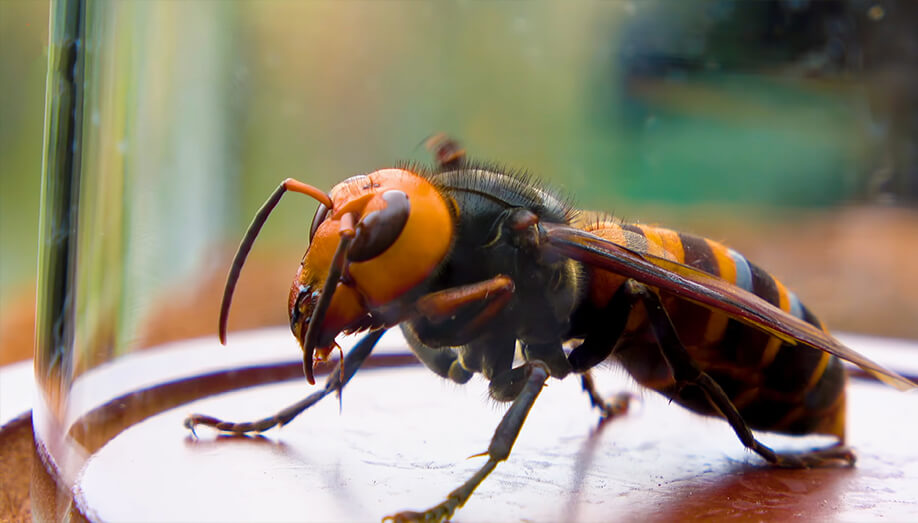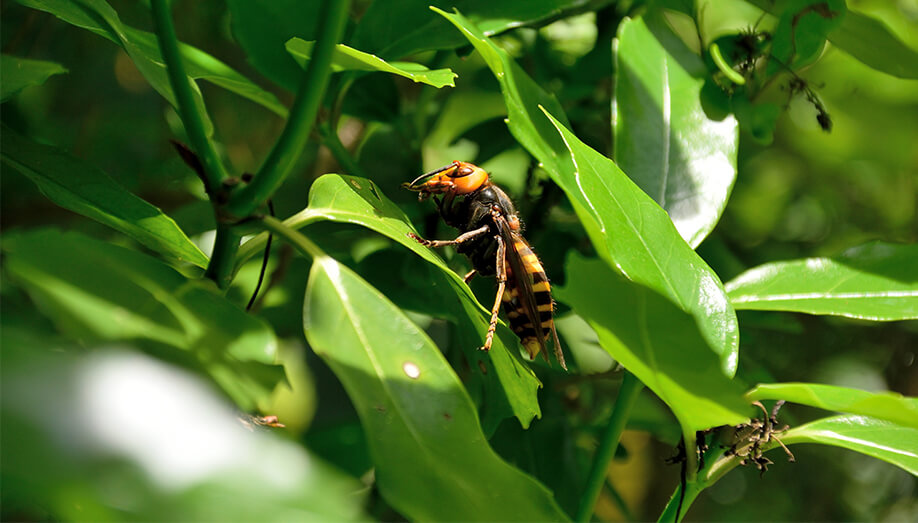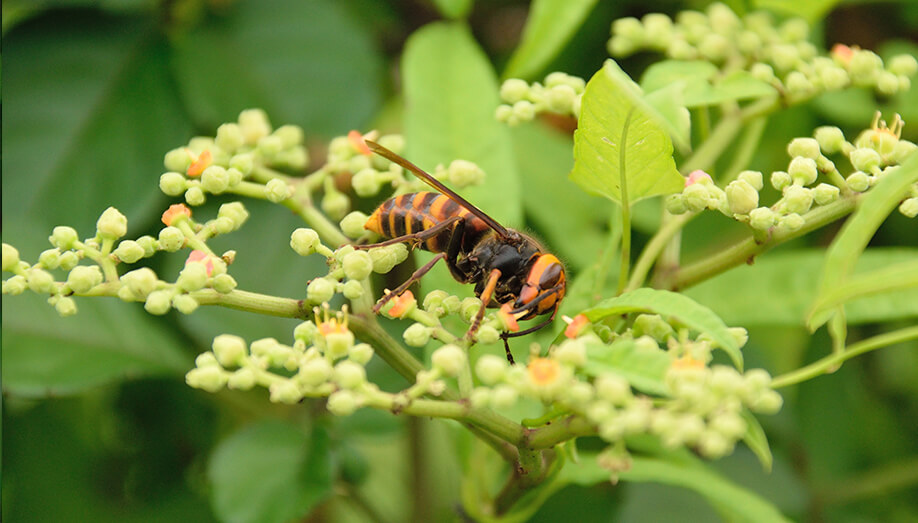
The Asian Giant Hornet, also infamously known as the Murder Hornet, has been found in the Pacific Northwest! The Washington State Department of Agriculture (WSDA) has confirmed multiple reports in Blaine, Washington and has also received unconfirmed reports south of Blaine in Custer.
If you haven’t been paying attention to the news over the past few weeks, you may not have heard about these huge hornets with massive stingers. The concern is legitimate, but just how worried about the hype should we really be?
We’ve been getting a lot of questions about Murder Hornets from our customers, so here’s a quick breakdown of nine things you need to know:
What is a Murder Hornet?
The name “murder hornet” was drummed up through social media to evoke fear and intrigue; the scientific name is vespa mandarinia, but it is more commonly known as the Asian Giant Hornet. Native to East Asia, South Asia, Mainland Southeast Asia, and parts of Russia.
They can typically be found building subterranean nests by digging or by taking up residence in small burrows that rodents or other critters have already made. Nests will generally range anywhere from a few inches deep to approximately two feet down.
As it is primarily an insectivore, we believe the “murder hornet” name partially stems from how aggressive this hornet can be towards other bees, wasps and hornets. It only takes a small handful of these hornets roughly an hour to kill off a bee hive, slaughtering the entire hive in an effort to feed.

How big is a Murder Hornet, and what does it look like?
The Asian Giant Hornet is the biggest hornet on the planet, big enough that residents of Japan have referred to it as a “great sparrow bird.” Most are approximately two inches long, with a wing span of around three inches. The sheer size of this hornet makes its “buzz” so loud that you will often hear it coming before ever seeing it.
Queens, workers, and drones all have a very similar look, but can vary in size among a few other differences. The reproductive anatomy of queens and workers (females) is identical, but workers are much smaller and don’t reproduce. Markings and coloration between the two are also identical. Drones (males) are similar to females, but they lack a stinger, a trait they share with all insects in the order hymenoptera.
Regardless of sex or size, the Asian Giant Hornet’s head is a lighter shade of orange with brown antennae and a yellow/orange color at the base. Its large mandibles are also orange and contain a distinct black tooth that it uses for digging.
Its thorax is dark brown, with two large grey wings attached. The Asian Giant Hornet’s abdomen has alternating bands of color consistent with the coloring on its head; generally, these color bands will be a dark brown/black and a yellow/orange. The stinger on this hornet is a massive ¼ inch long, capable of penetrating bee suits or additional layers of clothing, and packing a painful and extremely venomous sting.
As there can be a number of similarities to other species of hornet or wasp, it can be helpful to educate yourself on other local insects. The WSDA has a brief guide on the Asian Giant Hornet, including spotting differences in some other species.
How potent is the venom of the Murder Hornet?
The sting of an Asian Giant Hornet is especially potent, as it contains damaging neurotoxins and delivers large volumes of venom. The venom isn’t the most lethal wasp venom by weight, but the increased volume that is injected by the sting makes it potentially deadly.
A single sting is not likely to be lethal to humans (when not allergic), but multiple stings greatly increases the risk of death even to those not allergic. Deaths resulting from envenomation are usually caused by anaphylactic shock and/or cardiac arrest.
Despite its potential to be lethal to humans, parts of the world where Asian Giant Hornet are indigenous report very few deaths. As an example, Japan reports approximately 12-26 deaths per year from bee stings; as this statistic includes all other bees, wasps and hornets, death by Murder Hornet is actually very low.
How painful is the sting of an Asian Giant Hornet?
Masato Ono, a prominent entomologist from Tamagawa University in Tokyo, described the sensation of being stung “like a hot nail being driven into my leg!”
Other notable social influencers say the sting of the Asian Giant Hornet comes in at a close second to the executioner wasp, an insect known for having the most painful bee sting in the world (where high levels of pain can last up to 36 hours).
Will the Murder Hornet sting for no reason?
Typically, this hornet won’t sting unless provoked; however, if you try to catch, kill, spray, or otherwise disturb them, the odds of being stung rise considerably.
Just like most hornets, if they feel threatened, they will defend themselves by attacking. If you happen to stumble on a single hornet, the likelihood of being stung is very low; stumbling on a nest is a different story. If you do end up disturbing an entire nest and manage to get stung multiple times, we recommend seeking immediate medical attention.

How did the Asian Giant Hornet get here to the Pacific Northwest?
Many invasive species have made their way to the Pacific Northwest via cargo ships. Experts agree that the Murder Hornet most likely made its way here in a similar fashion on a cargo ship from Asia. We can be relatively certain that they didn’t fly here, as the trip is far too long and the hornets would have tired and died.
How many are here in the Pacific Northwest?
We aren’t exactly sure how many Asian Giant Hornets have arrived here in Washington, but we know that the number is small and the sightings are isolated to the northwest section of the state.
The number of hornets is currently believed to be in the single digits, but the WSDA isn’t taking any chances: in April, the WSDA placed 60 sap traps in Whatcom County to attract queens emerging to feed on sap. We’ve been told that there are plans to set traps at an additional 330 locations this summer.
In addition, the WSDA is urging beekeepers and other residents to set bottle traps that utilize an experimental lure comprised of orange juice and rice cooking wine to trap them.
Should I be afraid of the Murder Hornet?
Most of us really don’t have a reason to be afraid for our safety; beekeepers and European Honey Bees, on the other hand, need to be wary of the Asian Giant Hornet.
Unfortunately, European honey bees do not yet have a defense against the attack of the Murder Hornet; just a few hornets are capable of decimating an entire colony of honey bees. These beneficial pollinators are already on the decline, and we can’t afford to let things get much worse.
Asian Honey Bee species, however, have adapted and come up with an interesting defense mechanism to protect against the Murder Hornet: when attacked, the honey bees will swarm and form a “bee ball” around the attacking hornet, and then feverishly flap their wings, raising the body temperature of the attacking hornet—essentially cooking it to death.
Our biggest concern is if the Asian Giant Hornet is able to establish a stronghold here in the United States, potentially wiping out our honey bee population. However, the likelihood of these hornets being able to successfully spread is very minimal, so there is little reason to be afraid for our personal safety.
We hope we’ve been able to answer most of your questions about the infamous Murder Hornet. If you should have any additional questions, please feel free to reach out to us!

